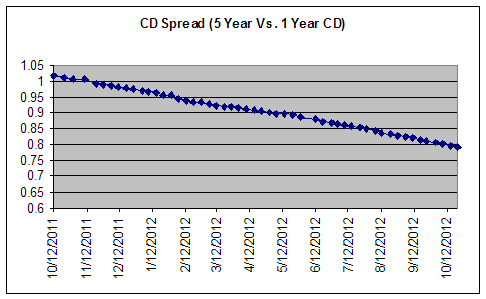An article in CNN Money piqued my interest. It states that many banks are worried about a future of rising rates on deposits. As the article states:
"Lenders have benefited handsomely as a result, borrowing money cheaply and making long-term loans with healthy profit margins. But expectations are growing that the nation's central bank will soon reverse its loose monetary policy stance in an effort to tamp down the threat of inflation."
Regulators are worried that when this dynamic reverses itself, many banks will face financial problems and some could fail. In its quarterly conference call last week, Wells Fargo said it expects a rapid increase in rates sometime in the future. This would be troublesome to smaller banks that don't have the interest rate hedging tools employed by their more sophisticated, larger counterparts.
The best way to counter this interest rate risk is to lock as much of their deposit portofolio into longer term CDs. As a result, I expect we'll see many banks promoting 3-5 year cds and loosening early withdrawal penalties. Banks know that once a consumer opens a CD, inertia often keeps them in it regardless of the relative rate. Ally Bank recently lowered their early withdrawal penalties.
Some of the bigger banks may even benefit from rising rates. Wells Fargo stated that they are not deploying their cash not, but are keeping their powder dry in anticipation of higher future loan rates. Why lock money up in a 30 year mortgage paying 5% when they might be able to get 6.5% or even 7% in a year or two?

